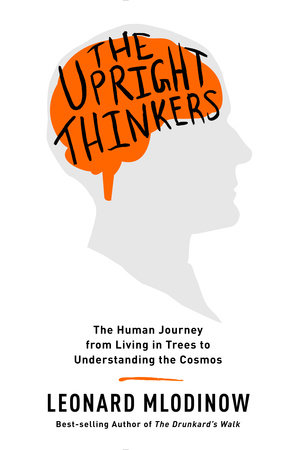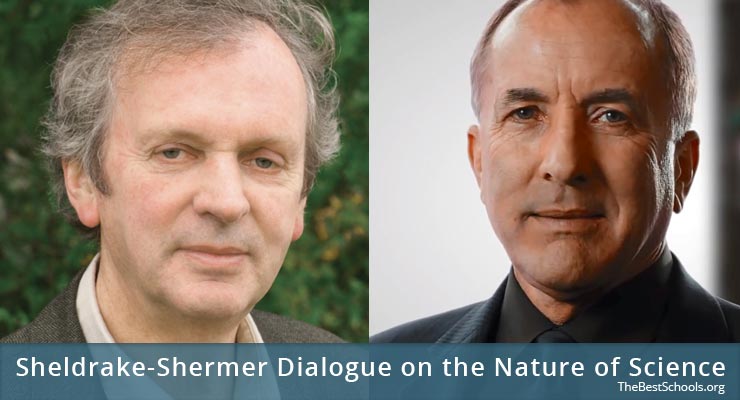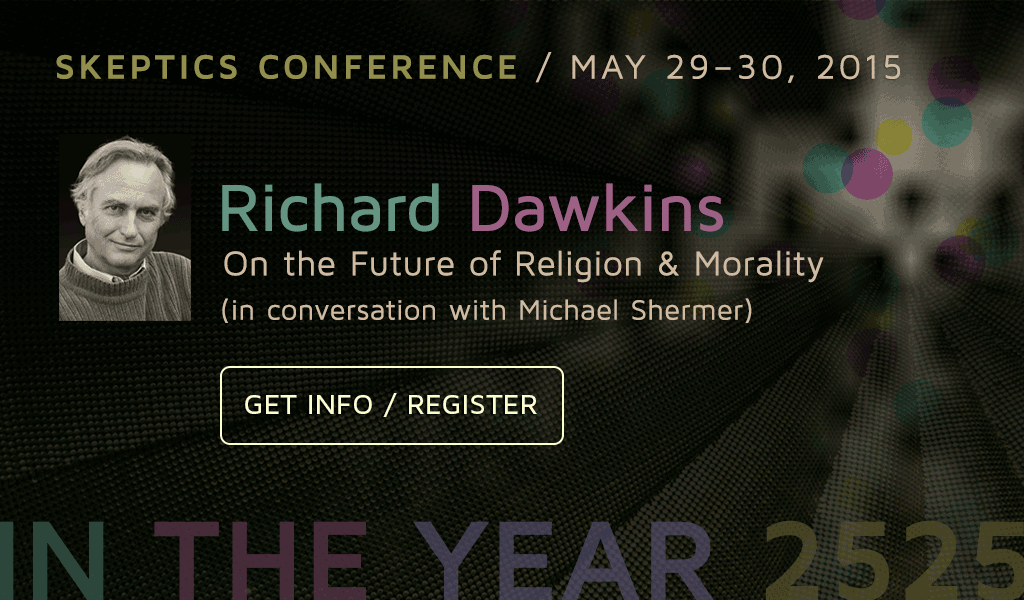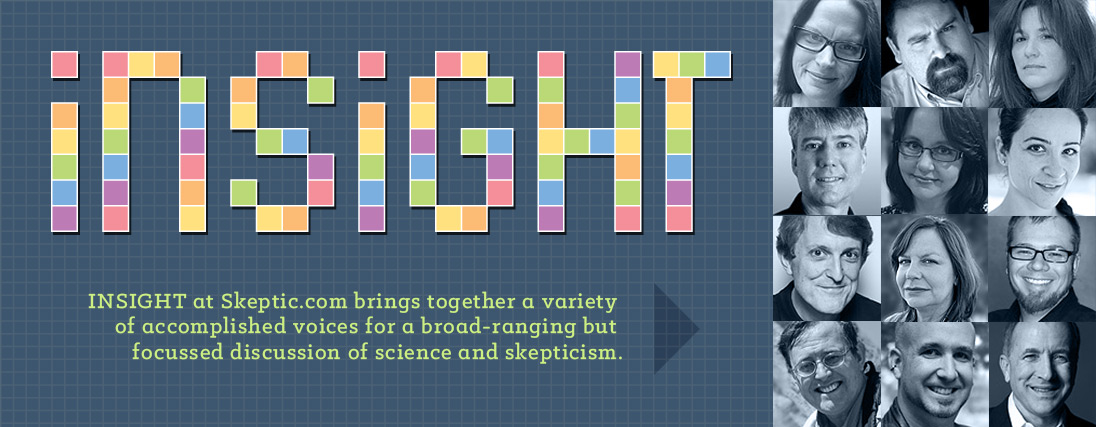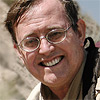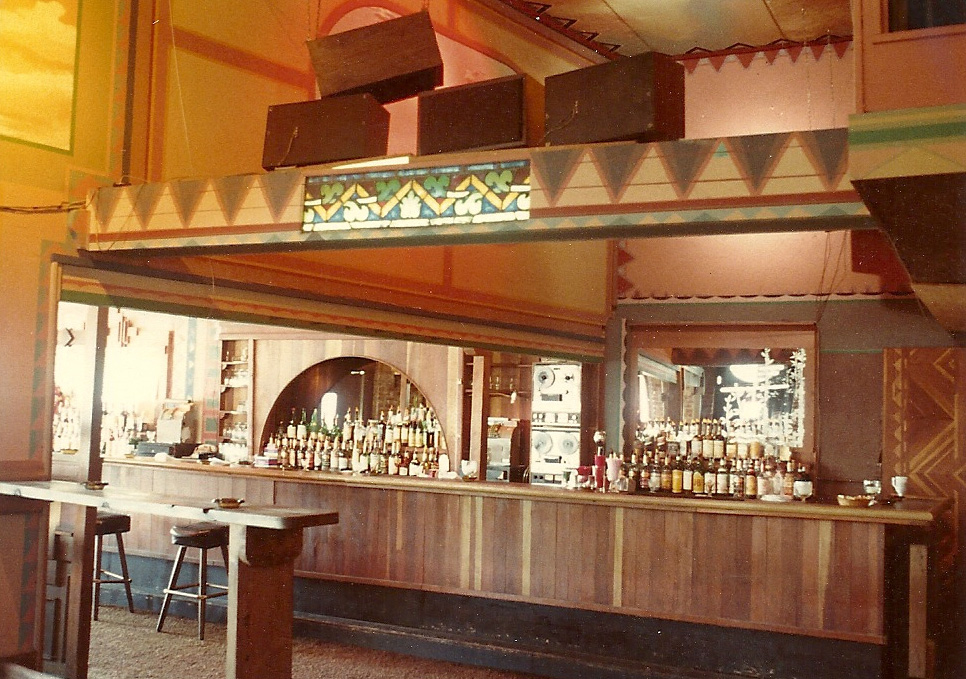
Rascals, circa 1978. First gay bar in LA with open windows to street.
About this week’s eSkeptic
In this week’s eSkeptic, Russell Friedman—skeptic, colleague, and friend of Michael Shermer—writes in response to Shermer’s article on the gay rights revolution. Friedman recounts his experience opening the first gay bar in Los Angeles with windows that faced the street, a big deal at the time as gays were still in the closet and all such public venues were hidden to the public and you had to know where to go to get in.
Russell Friedman is executive director of The Grief Recovery Institute Educational Foundation and co-author of The Grief Recovery Handbook, When Children Grieve, and The Grief Recovery Handbook for Pet Loss.
From Stonewall to Indiana with a stop-over in West Hollywood
by Russell Friedman
In the April 29 issue of eSkeptic Michael Shermer wrote an article (which also appeared in his Moral Arc Blog) entitled “From Stonewall to Indiana: The Collision Between Religious Freedom and Gay Rights.” Reading this was a trip down memory lane for me. Like so many people, after a difficult childhood I struggled to find my own identity, and then had to fight to maintain it in a cookie-cutter world that wants to fit people into convenient, easy-to-label boxes.
Although I had managed to graduate college, I had no profession and even less idea of what I might want to do with my life. I moved to New York because that’s what you did back in 1964 to seek your fame and fortune. Not having a trade to ply, I wound up working in a restaurant called The Proof of the Pudding. Although I really enjoyed working in that restaurant, I never adapted to life in New York. A year later, on impulse, I picked up and moved to London. I managed to get a legal work permit from the Home Office there and started at the ground floor as a busboy in a hotel restaurant. Over time I worked my way up to headwaiter and became even more convinced that I’d found what would be my life’s work.
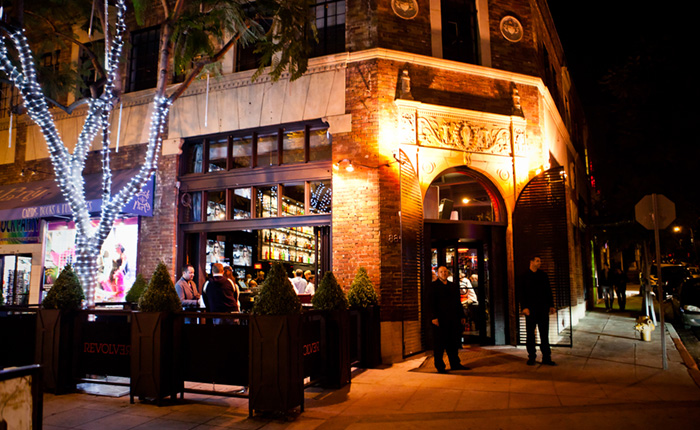
Modern location of the old Rascals. Shows innovative openness – novel at the time.
After my stint in the hotel restaurant, which earned me the UK equivalent of a Green Card, I was hired to run a wild and crazy Russian Bistro called the Borshtch N Tears, which is still there at 46 Beauchamp Place, a few blocks from Harrods. One of my co-workers at the restaurant, an older woman named Tan, told me her daughter was coming back from the Sorbonne in Paris because of the student riots. She asked me if I’d like to meet her. I said yes. I met Vivienne on Sunday. We got married on Tuesday, two days later, at the Chelsea Town Hall on King’s Road in London. It was very romantic, and illustrates that I march to my own drum.
As much as I enjoyed the restaurant part of my life in London, I didn’t feel entirely at home in London. So a few months after Viv and I got married, we packed up our meager possessions and moved to Los Angeles, West Hollywood to be exact. It was 1968 and West Hollywood had not yet taken on the sobriquet as a Gay City. Gay was not entirely out of the closet yet; gay men were constantly being arrested at the park on San Vicente; and the idea of formal gay marriage wasn’t even on the horizon. But the population, especially in the area between La Cienega on the East, and Doheny on the West was predominantly gay. The other major population groups were recent Russian immigrants and senior citizens. While there were occasional flare-ups between those groups, in the main there was a benign co-existence.
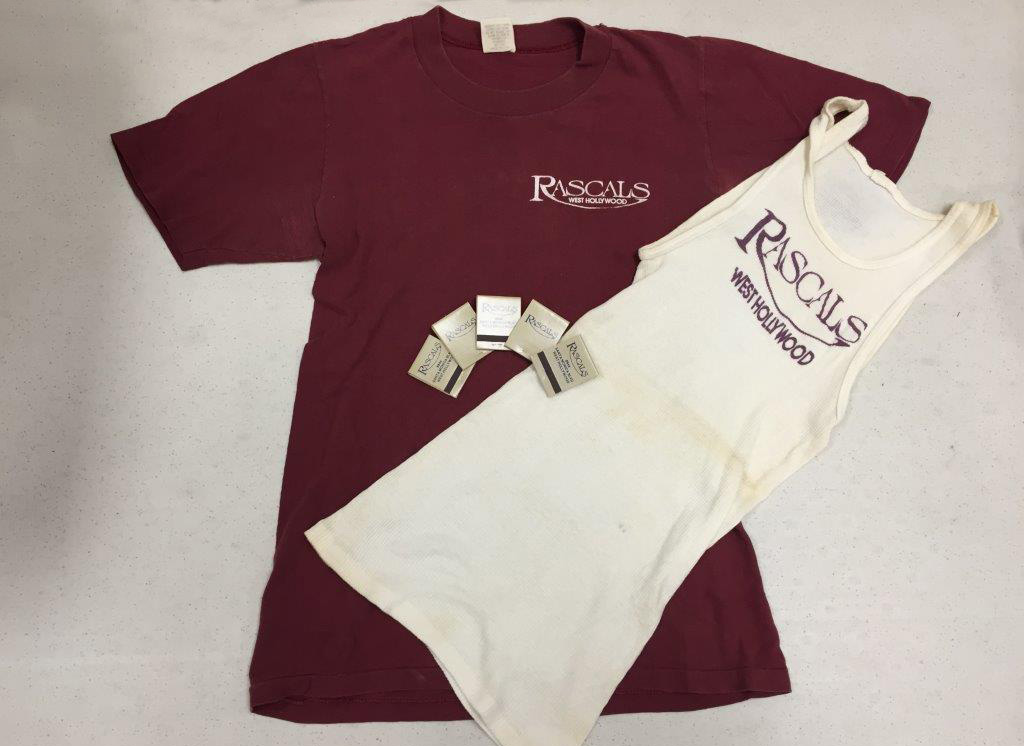
Tank top, T-shirt, and book matches. All that’s left of the original Rascals.
West Hollywood was a true “live and let live” community, and for me, having struggled to find who I was and how to fit in, it was the perfect place. And it was here that I opened the first gay bar in Los Angeles with open windows to the street. Here is how it happened.
At that time, when gay was still mainly in the closet, most gay bars were like pill boxes, hidden on side streets with no windows on the world. You had to know where they were to find them. San Francisco was already wide open, but LA lagged behind. In 1970 Vivienne and I opened our restaurant, The Taming of the Stew. Two years later we changed the name to Lost on Larrabee. Larrabee was, and still is, a very short street, starting at Santa Monica Blvd. and only going a few blocks north to just above Sunset Blvd—thus the name.
After Viv and I divorced, my heart just wasn’t in the restaurant business any more. Essentially it was a mom and pop place, and mom was gone. In 1977, I closed the restaurant and made one of my former employees—who was gay—a business partner, and turned the restaurant into a gay bar called Rascals. The place was an instant success. On opening night, Wayland Flowers entertained the throng with his famous puppet character, Madame. (If you’ve never seen Wayland and Madame, treat yourself. Not long after we opened the bar I became the first president of the Tavern Guild of LA, which was an association of gay bar owners. I was the only straight member of the Guild. Here’s a description written by a man who worked for us:
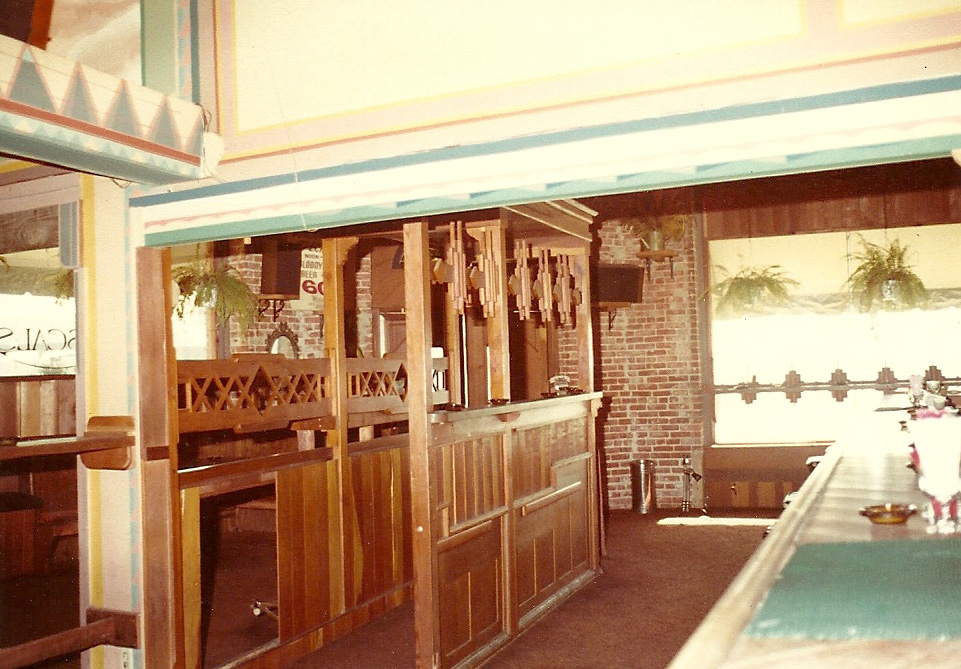
Another view shows Rascals beautiful redwood carpentry.
Rascals was the first gay bar in West Hollywood to have huge windows looking out onto the street. We were also the first to have an obvious entrance facing the street. Most the bars at the time had entrances at the back or very unassuming doors at the front that were always kept shut. We were open to the street and proud of it. The bar was a huge success and started the move for bars to come out of the dark. We can thank Stonewall for the strength to do that.
The naming of the bar was also a quirky story. For the life of us, my partner, Larry, and I couldn’t come up with a name. We were buying the Racing Form every day and scanning all the horse’s names, looking for one to hit us. In the meantime, the graphic designer who was going to create our logo and signage was getting nervous since it was less than two weeks until our opening night and we still didn’t have a name. One late afternoon I got home and my daughter, who was then about 8 years old, yelled to her mother, “Mom, Ruscal the Rascal is home.” I tore out of the house, jumped into my car and raced to Larry’s house. I ran in and said “Rascals!” And there it was, the perfect name. So the first gay bar in LA with open windows to the street was named by an 8-year old girl.
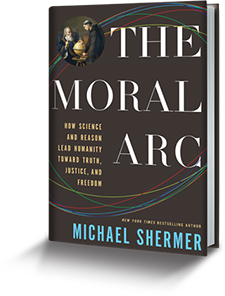
Visit the Moral Arc website for more information about the book, or click one of the following to order the book right now from Amazon, Shop Skeptic, Barnes & Noble, iTunes, iBooks, Kobo, and IndieBound.
Another story that really ties into The Moral Arc elements: The parents of my new wife, Jeanne, came to visit us. They were very Catholic, and my mother-in-law was the ultimate church-lady. I was concerned that she would want to see her daughter’s business, and that she would take offense at what she saw. On the dreaded night that we took them to Rascals, we entered through the kitchen and came up to the end of the 60-foot long bar. The room was filled to the rafters with 200 plus young men, in tank tops and tight shirts, all model good-looking and awash in testosterone. The music was blasting out of massive 8-foot tall speakers. Although technically there was no dancing, the room was swaying as if one body to the disco beat.
My mother-in-law took in the scene, with me watching like a hawk to see her reaction. All of a sudden I realized that she was no longer looking at the sea of young men, with almost no women in sight. She was focused on the bar and the four bartenders who were slinging out drinks and raking in the cash. In a flash, her eyes turned into dollar signs and I could read her mind. It was saying, “my daughter’s getting rich.” That visit turned out great, with never a negative word spoken about our customers.
I have many fond memories from back in the day, but some sad ones too—my business partner, and everyone else who worked for us, died from AIDS. But as I watch the gay rights revolution unfold at warp speed today, I realize how brave they were back then to come out into a world that didn’t understand their brand of normal. I am proud to have been a small part of the live and let live world that we must keep encouraging. ![]()



